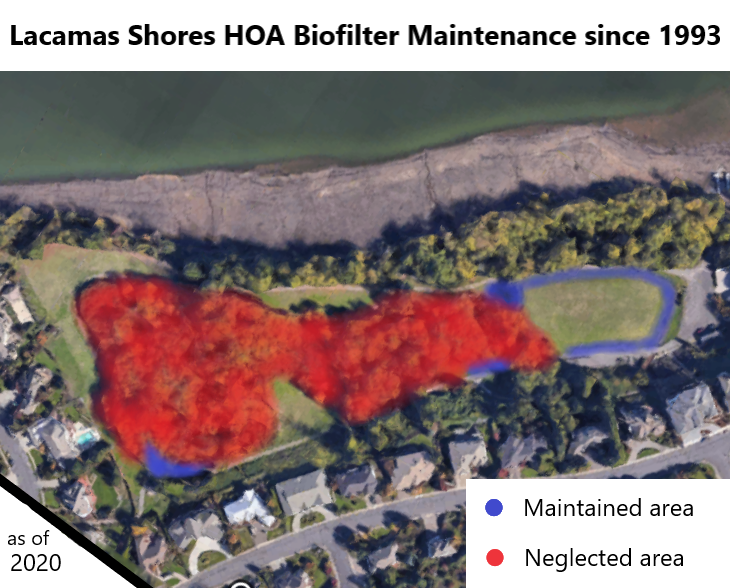The Meadowlands ("Lacamas Shores") Biofilter "Rediscovered" - FAQs Below
"Stormwater facility maintenance is necessary to protect streams, lakes, wetlands, and groundwater. Proper maintenance helps ensure that facilities operate as they were designed and that trapped pollutants, such as sediment and oils, are cleaned out so that the facilities do not become pollutant sources." [emphasis mine]
- Clark County Stormwater Maintenance Manual 2015, Book 4, p.1
- Clark County Stormwater Maintenance Manual 2015, Book 4, p.1
|
Why would anyone oppose improving the water quality going into Lacamas Lake? The answer is misunderstanding, desire to not spend $$, and inertia.
8+ years of research has clarified the purpose and design of the Lacamas Shores Biofilter. (See homepage) Logic, observation, and some testing show that this clogged biofiltration system is harming the already-impaired Lacamas Lake. Over the past 30 years, the origin and purpose of the LS Biofilter was forgotten and even mythologized. Bare minimum maintenance became the norm. Now, correcting years of inaction requires catch-up work by the LS HOA, plus future maintenance costs, but the ROI will be great for LS homeowners and the entire Camas lake community. See the FAQs below to clear up some of the myths that have become obstacles to cleaner lake water. |
For Lacamas Lake statistics:
Note: Official documents have used multiple terms for this property, such as "stormwater treatment facility" and "stormwater runoff disposal system". The court order that created the LS Biofilter used the phrase "biofilter storm drainage system".
|




